Students’ Contribution
Participation/Planning/Management as Volunteers
Participation as Volunteers
Language Volunteers
The city of Sendai recruited “language volunteers” to guide guests of the Third UN World Conference on Disaster Risk Reduction that took place between March 12 and 19, 2015. Their main tasks were to guide the guests around the venues – which included the Sendai International Center, Sendai Mediatheque, Sendai Airport and Sendai Station.
Students from Tohoku University played active roles in the conference. For example, of the 369 people who were registered as the language volunteers, 130 of them (about 35%) were from Tohoku University, and 114 of them were students.

■Number of people registered as language volunteers
-Total: 369
-Volunteers from Tohoku University: 130 (35%)
-Others: 239 (65%)
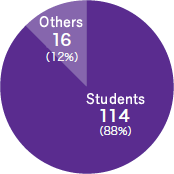
■Breakdown of volunteers from Tohoku University (130)
-Students: 114 (88%)
-Non-students: 16 (12%)
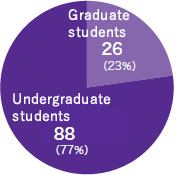
■Breakdown of Tohoku University Students (114)
-Graduate students: 26 (23%)
-Undergraduate students: 88 (77%)
One of the language volunteers answered our questionnaire.
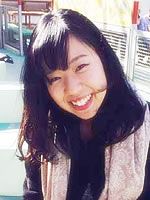
Nagisa Miyamoto
Senior year, Faculty of Education, Tohoku University (at the time of the event)
●Why did you decide to join the Third UN World Conference on Disaster Risk Reduction as a language volunteer?
When I was in my sophomore year, I studied in Sweden for a year. I wanted to give back to the people from around the world who helped me in a variety of ways there. I also wanted to contribute to the reconstruction of Tohoku and Sendai, which is my home city. That’s why I decided to join the conference.
●How did you feel about the UN World Conference on Disaster Risk Reduction being held locally?
In addition to the local people who came to the exhibition, there were also many foreign participants from all over the world, which was very refreshing. I felt that the conference gave us all a chance to remember what happened during the earthquake and think about the people who have been affected by it. It feels like we think about them less and less as time goes by. We should not forget what happened.
●What was the hardest thing as a language volunteer?
I was able to talk with the foreign guests using body language and hand gestures when I couldn’t find the right words. So I didn’t have much problem in terms of communication. But it was a really hard work in the physical sense. When I was working at Sendai station, I was standing all day in the cold attending to the guests. It was more tiring than it sounds! We introduced shorter shifts to increase our concentration.
●What did you gain from the experience?
It was about a year and a half after I came back from Sweden, so basically I joined the event as a language volunteer around the time that I was using English less and less in my daily life. So being part of this event was a great opportunity to use English again and to have communication with people from all over. Many people from abroad look you in the eye and smile when they talk to you. Especially when they say hello or thank you. It’s one of the things I felt I had learnt from them.
●What do you plan to do after this experience?
You can’t just sit and wait for an opportunity to speak English. I did a lot of volunteering when I was a college student, but after graduation, even that became a hard thing to do. I believe, however, that there are many experiences and connections you can gain by getting out there on your own, just like I did at the conference.
Management Support Volunteers
〈The Third UN World Conference on Disaster Risk Reduction Technical Support Project〉
During the Third UN World Conference on Disaster Risk Reduction, which took place between March 12 and 18, 2015, Tohoku University students supported the United Nations Office for Disaster Risk Reduction (UNISDR) at events held at the Sendai International Center and the Sendai City Museum.
The students contributed by collecting report materials from the conference, sharing the information on websites, guiding guests at the conference, manning the poster guide booths, and assisting physically-impaired guests.
■Place: Sendai International Center, Sendai City Museum
■Number of participants: 54

■Breakdown of participants (54)
-Undergraduate students: 26 (4*)
-Graduate students (23) (9*)
-Staff: 5 (0)
*The numbers in the brackets indicate the numbers of foreign students/residents
One of the management volunteers answered our questionnaire.
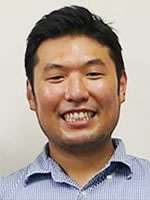
Fumiyasu Makinoshima
First year, MA in Civil Engineering, Second year in Inter-Graduate School Doctoral Degree Program on Science for global safety (at the time of the event)
●What brought you to the Third UN World Conference on Disaster Risk Reduction Technical Support Project?
When I applied to Tohoku University, I chose the Tsunami Engineering Laboratory because it was involved in many activities that contributed to international tsunami disaster reduction. I was interested in how Japan, a country known for advanced disaster reduction measures, can contribute globally. That’s why I chose to participate in this conference.
● How did you feel about the UN World Conference on Disaster Risk Reduction being held locally?
Disaster risk reduction receives a lot of attention right after a natural disaster, and people acknowledge its importance. But other times, it’s a field that tends to be forgotten. That’s why I was so moved to see people from all around the world re-acknowledge the importance of disaster reduction in Tohoku and participate in discussions to achieve the same goal. At the same time, I felt that it is really difficult for different countries in different situations to reach an agreement!
●What was the hardest thing about this project?
My tasks at the disaster reduction conference were to set up and manage the UN booth, liaise between UN organizations and UNISDR staff, and help set up the venue. I could handle these tasks mainly in English, but some of the people at the UN booth couldn’t speak English, so it was really hard for me to figure out how to communicate with them. If I could speak French, I could have communicated better with almost everyone who came to the booth.
●What did you gain from the experience?
I got to experience Japan as an advanced nation in disaster reduction. One of the guests said to me when I was on duty, “In my country, the increase of damage caused by natural disasters is becoming a big problem, but we don’t know how to deal with it. That’s why I came all the way to Tohoku to study it.” I felt that other countries are counting on Japan, and I appreciated the significance and importance of what I have been studying.
●What do you plan to do after this experience?
I wish to move on to the doctoral program and continue to do research on tsunami evacuation. My current research field is limited to the Tohoku area, but since I gained a more global point of view from participating in the UN disaster reduction conference, I want to always bear in mind how my research can contribute to disaster risk reduction around the world, not just in Japan.
Planning/Management
Children & Youth Forum
The Children & Youth Forum, one of the UN’s related official events, was held at Tohoku University’s Kawauchi Campus from March 11 – 18, 2015. Tohoku University students joined in the event as representatives on the Japan committee.
Approximately 200 youths and children from more than 35 countries around the world took part in the event. For eight days, they discussed their thoughts on “disaster reduction,” and even had a session with the Secretary-General of the United Nations himself, Ban Ki-moon,

Photo: Children & Youth Forum Organizing Committee
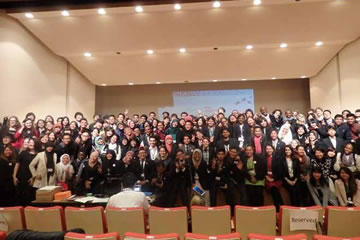
Photo: Children & Youth Forum Organizing Committee
One of the participants of the forum answered our questionnaire.

Sachi Suzuki
First year
Department of Architecture and Building Science,
School of Engineering, Tohoku University
●What brought you to the event? What role did you play there?
I was a representative of the Japan committee of the Children & Youth Forum. The forum, which is a part of the Disaster Risk Reduction Conference’s official events, was a one-week workshop aimed at children and young people. Mr. Yuichi Ono, former UNISDR employee and now a professor at the International Research Institute of Disaster Science, first talked to me about getting involved when the committee started because I am based in Sendai, and I’m very interested in international projects on disaster reduction.
● How did you feel about the UN World Conference on Disaster Risk Reduction being held locally?
I felt that it’s very important to decide what to do before and after a huge event. For example, people spend about a year before and after an international conference negotiating and setting detailed goals to be pursued after the event. Even in the youth forum, it’s important that we have strong ties before the event and continue to be attentive to the participants after the event.
●What was the hardest thing at the event?
It was the planning and preparation with the youths around the world. I heard that this was the first attempt by the UN to include an event planned and managed by young people in its official program. It was an extremely tight schedule, considering we had to do everything from funding to conducting the event in six months. We had about 50 members, and we used online tools such as Skype and Google Docs.
●What did you gain from the experience?
I was amazed by how motivated young people seem to be about disaster reduction, especially in Asia. People sometimes tend to think that young people and children are the most vulnerable and therefore should be protected in times of disaster. But it was as if they were trying to defy that perception. These children and youths seem to have a very strong sense of duty to tackle disaster reduction.
● What do you plan to do after this experience?
In Japan, we are far behind when it comes to building a platform for young people to get and stay involved in disaster reduction. This time, we invited young people from various areas to create the Japanese Youth Disaster Reduction Declaration. In order to put the declaration into action, I hope there will be a platform where young people can stay connected and communicate with each other.
●Anything else you’d like to add?
I feel that young people can put their thoughts into action and play the role that connects other generations. I believe we have a great potential to influence other generations through our small actions, and we should get more involved in the decision making process. It all depends on what the 200 participants are going to do after they go back to their home countries!




